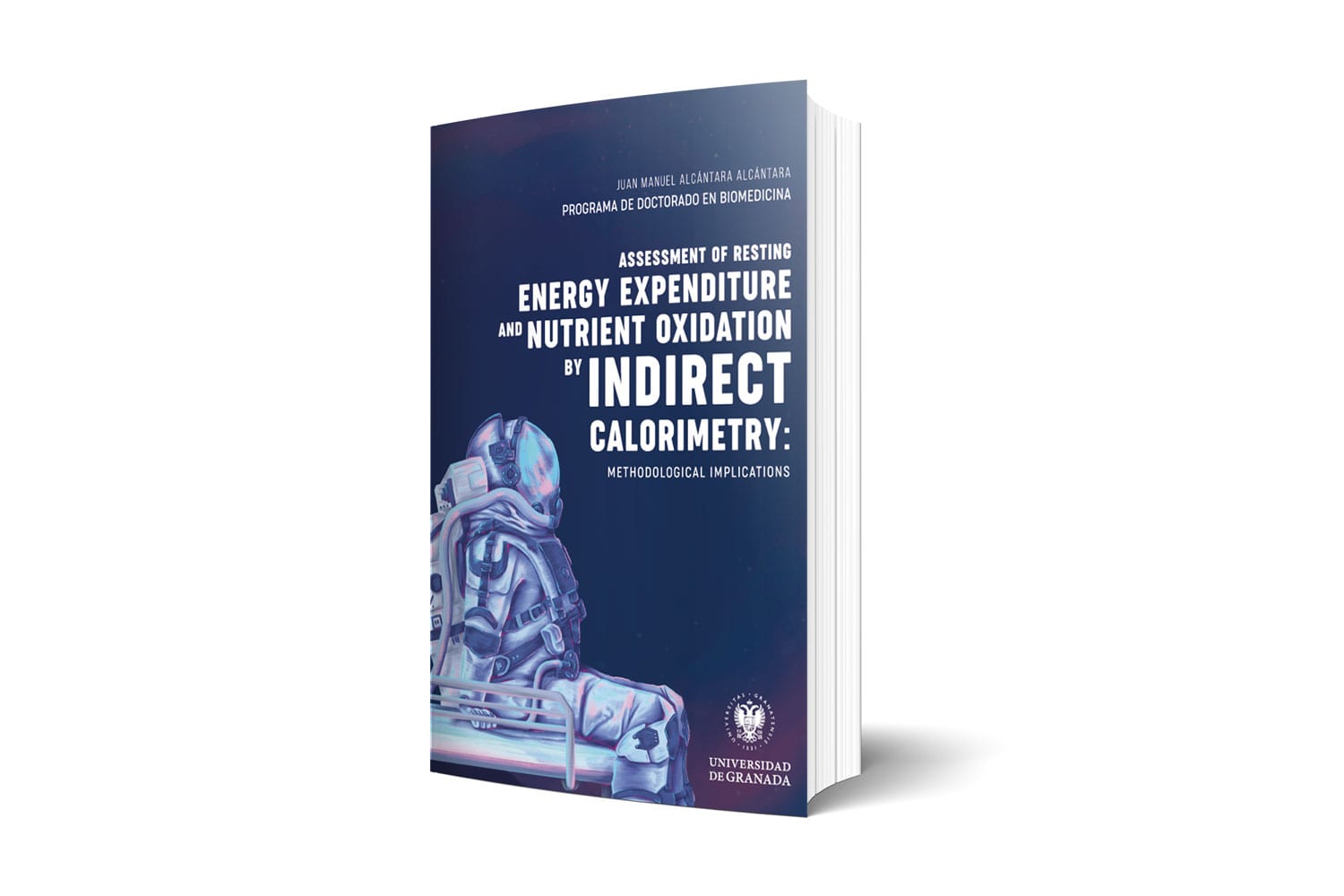Assessment of resting energy expenditure and nutrient oxidation by indirect calorimetry: methodological implications.

Free hardcopy: Assessment of Resting Energy Expenditure and nutrient oxidation by indirect calorimetry: methodological implications.
Are you interested in measuring Resting Metabolic Rate and nutrient oxidation in humans? Do you want to find out how the performance of metabolic carts can be tested, and how a most optimal system can be chosen? Then this book is an essential reading for you. Contact us to receive a free hardcopy, as long as supplies last.
Background of this doctoral thesis:
Indirect calorimetry (IC) is the reference method to assess human resting metabolic rate (RMR), the largest component of total energy expenditure, except in extremely active individuals. In addition to RMR, IC also allows to determine the respiratory exchange ratio (RER), which gives valuable information about the type of energy substrates (fat vs. carbohydrate) being metabolized. Among the available IC systems, metabolic carts are the most extended in both research and clinical settings. The Deltatrac metabolic cart (Datex Instrumentarium Corp, Helsinki, Finland), which has been for long considered the gold standard for assessing RMR, is no longer manufactured. Numerous research groups around the world are deeply studying human RMR and RER and its regulation. Therefore, the identification of valid metabolic carts and data analysis methodology is of great importance. On the other hand, the method for IC data analysis commonly differs across studies, and the use of different methods might result in different estimates of RMR and RER.
What can you expect to read in this thesis?
Section 1: Performance studies on six metabolic carts for assessing RMR and RER.
Performance testing, the accuracy, precision, and the day-to-day biological reproducibility of the Q-NRG (Cosmed, Rome, Italy), the Vyntus CPX (Jaeger-CareFusion, Höchberg, Germany), the Omnical (Maastricht Instruments, Maastricht, The Netherlands), and the Ultima CardiO2 (Medgraphics Corporation, St. Paul, MN, USA) were assessed, while the dayto-day biological reproducibility was assessed for the CCM Express and the CPX Ultima CardiO2 (Medgraphics Corporation, St. Paul, MN, USA). Lastly, the effect of a post-calorimetric correction procedure, based on the infusion of pure gases after the individual measurement (developed to correct the metabolic cart data using its previously assessed ‘error’), was also tested in the Q-NRG, the Vyntus CPX, the Omnical and the Ultima CardioO2.
Section 2: Most optimal methods for indirect calorimetry data analysis in RMR and RER
Three methods for IC data analysis were analyzed: a) the steady state time method (i.e. the analysis of a period remarkably stable), b) the time interval method (i.e. the analysis of a pre-defined period – short or long time intervals) and c) the filtering method (i.e. data above or below a given threshold are discarded). The impact of these methods on the RMR and RER estimations and its day-to-day biological reproducibility was assessed.
Results and main finding:
The results of the present Doctoral Thesis show that all the metabolic carts yielded different RMR and RER measures. The Omnical metabolic cart presented better accuracy and precision than the rest of metabolic carts, although the day-to-day biological reproducibility achieved by the Q-NRG and the Vyntus CPX was similar to the one achieved by the Omnical. The post-calorimetric correction procedure did not improve neither the comparability nor the day-to-day RMR and RER biological reproducibility in the four analyzed metabolic carts. On the other hand, we observed a strong association between the day-to-day biological reproducibility assessed with the CCM Express and the CPX Ultima CardiO2 metabolic carts. Finally, the longtime interval method for IC data analysis presented the best day-to-day RMR and RER biological reproducibility in four metabolic carts.
Collectively, the results of this Doctoral Thesis suggest that the Omnical is the best metabolic cart for assessing RMR and RER among the six metabolic carts analyzed. Moreover, this Doctoral Thesis suggest that the day-to-day biological reproducibility is largely attributable to the individual’s characteristics and is not improved by the application of a post-calorimetric procedure based on the infusion of pure gases after the individual measurement. Finally, among the methods for IC data analysis, the long-time interval method seems to be the most adequate for analyzing the data provided by the analyzed metabolic carts.
